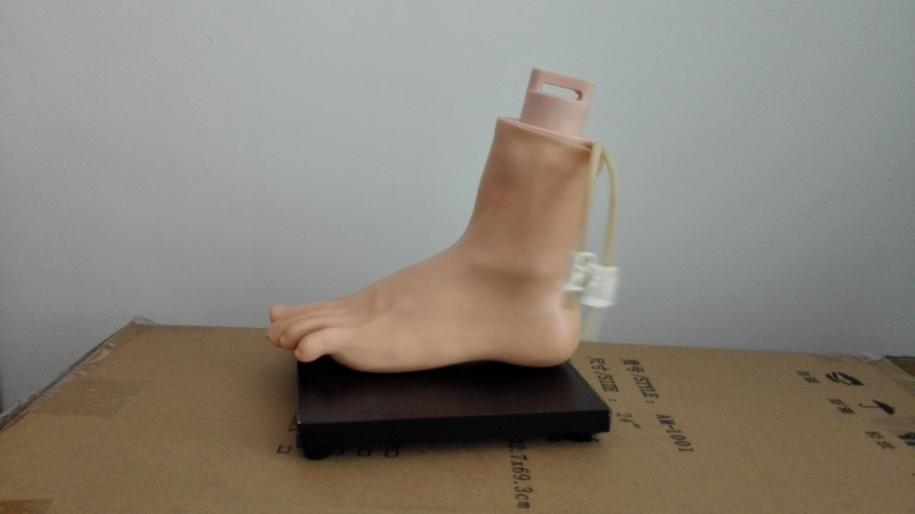In the field of medical care, intravenous injection of lower limbs and feet is a common and important technology. In order to improve the operating skills and accuracy of medical staff, the lower limb and foot intravenous injection simulation model came into being. This article will focus on the application value, advantages and future development trends of the lower limb and foot intravenous injection simulation model in medical practice.

The lower limb foot intravenous injection simulation model is a highly simulated teaching tool that can simulate the real human lower limb foot vein structure and injection environment. Medical staff can practice repeatedly on the model to become familiar with and master the correct methods and techniques of intravenous injection. This model not only helps medical staff improve their operational skills, but also reduces errors and complications that may occur during actual operations.
The application advantages of the lower limb and foot intravenous injection simulation model lie in its authenticity, safety and repeatability. First of all, the model is highly simulated and can simulate the real vein structure of the human lower limbs and feet, allowing medical staff to feel the real operating environment during training. Secondly, the model is highly safe to use and avoids the risks that may arise from practical operations on actual patients. In addition, the model is reusable, allowing medical staff to practice multiple times at different times to deepen their understanding and mastery of intravenous injection techniques.
With the continuous advancement of medical technology and the update of nursing concepts, the lower limb foot intravenous injection simulation model will play an increasingly important role in future medical education. In the future, this model may introduce more intelligent technologies, such as virtual reality, augmented reality, etc., to make training more vivid and intuitive. At the same time, the design of the model will also be more sophisticated, capable of simulating more types of venous structures and pathological changes in the lower limbs and feet to meet different levels of training needs.
In addition, the simulation model of intravenous injection in the lower limbs and feet is also expected to play an important role in the field of scientific research. By performing intravenous injection operations on the model under different conditions, researchers can explore safer and more effective injection methods and drug dosages, providing a more scientific basis for clinical practice.
In summary, the lower limb foot intravenous injection simulation model has extensive application value and advantages in medical practice. With the continuous advancement of technology and the continuous expansion of application scenarios, this model will provide more comprehensive and efficient support for the training and scientific research of medical staff. We look forward to the lower limb and foot intravenous injection simulation model playing a greater role in the future and contributing to the development of medical care.
